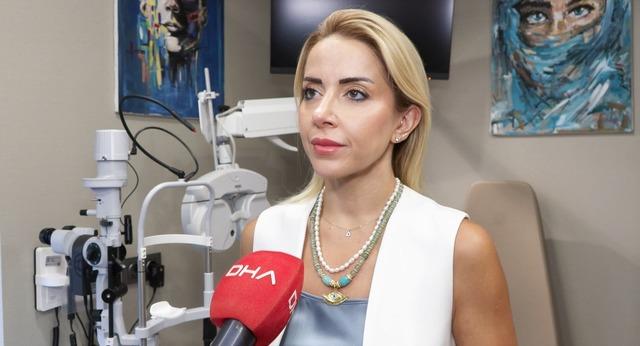Stating that treatment approaches can change in eye stones that occur inside the eyelids, Ophthalmology Specialist Assoc. Dr. Başak Bostancı provided information on the subject.
Assoc. Prof. noted that these stones are usually noticed during routine examinations. Dr. Bostancı said, “It should not be forgotten that diseases such as chronic dryness, allergies and concretion, which are not very common among the public, occur during eye examination, in addition to diseases that we try to raise awareness about, such as yellow spot disease or eye pressure.”
“BE CAREFUL IF EYE STONES PUNCH THE STRUCTURE WE CALL CONJUNCTIVA AND PROJECT TOWARDS THE EYE SURFACE”
Assoc. Dr. Bostancı said, “The structure that we call conjunctival concretion with its Latin name, is in the part of our eyes that covers the inside of the lid; These are the names we give to the small stones of white and yellow color, which can be one or several on the upper cover and the lower cover. Although we call this structure a stone, we cannot say that it is actually a stone. Eye stones are small white deposits formed by the covering of the protein-like materials in the epithelial cells that cover the surface of our body and the tear-producing glands with calcium over time. These are not harmful, but if small deposits pierce the structure that covers them, which we call the conjunctiva, and protrude towards the surface of the eye, then they may sting into the patient’s eye, causing a foreign body sensation, redness, burning, stinging, and may cause some discomfort in the patient. When we see small white crystals in the eyelids of our patients when there are such complaints, we can remove them with the help of a very small needle. Then we relax the patient with treatments.”
“IT MAY OCCUR WITHOUT ANY REASON”
Stating that eye stones are usually seen in middle and advanced age patients, Assoc. Dr. Bostancı said, “Stones can occur for no apparent reason, and these deposits can form over the years in patients with chronic dryness and allergies. Patients can learn that they have these deposits in their eyes in their routine examination without experiencing any symptoms of complaints. In some of our patients, when they apply to us with the complaint of stinging caused by sand or a foreign object in their eyes, we show them these formations in their eyes and start the treatment.”
“IF IT DAMAGES THE TRANSPARENT LAYER, IT MUST BE REMOVED BY AN EYE DOCTOR.”
Assoc. Dr. Bostancı continued his words as follows:
“Sometimes eye stones are covered with a very thick layer of conjunctiva. In some of our patients, we treat the stones with artificial tears and gels if there are not excessive complaints even though there are too many eye stones. However, if the eye stones have become evident from the surface and cause some problems by cutting the conjunctival layer and damaging the transparent layer on the outer part of the eye, they must be removed by an ophthalmologist. What I need to underline here is that patients should never try to remove their eye stones at home on their own. It must be removed under a microscope by an experienced ophthalmologist with local anesthesia and the correct antibiotic treatment must be given. If the eye stones come out due to chronic allergy or dryness, they should be treated in the case of allergies and dryness, which are the main causes.”
“EYE STONES MAY COME AGAIN OVER TIME”
Underlining that eye stones can come out again in time, Assoc. Dr. Bostancı said, “Our patients can come to regular eye checks and get information about whether the stones have come back. At this point, we should underline the importance of regular eye examination; It should be kept in mind that in addition to the diseases that we try to raise awareness about the eye such as yellow spot fastness or eye pressure, there are also common unknown conditions such as chronic dryness, allergies, concretion during eye examination. A more comfortable vision can be achieved with routine eye examinations.”
(DHA)
